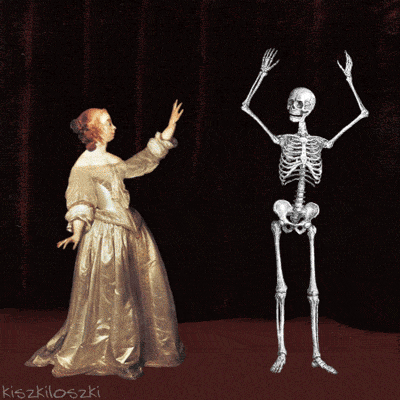Sometimes Halloween sneaks up on you before you’ve even had time to savor the changing of the seasons or indulge in spine-chilling fantasies of fear and foolery. If you are low on the Halloween vibes this year, why not trick or treat yo’self to these five ghastly and gruesome works of art, sure to get you in a ghoulish mood.
(Warning: Some of the images below may be considered graphic.)
1. Death and the Miser by Hieronymus Bosch at The National Gallery of Art, Washington D.C.
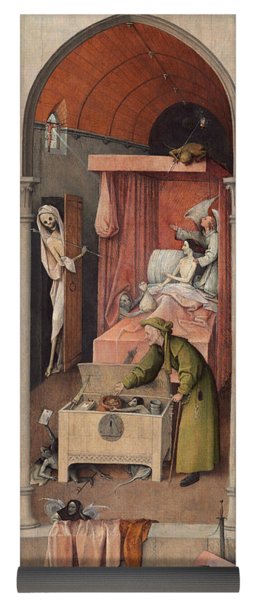
Death imagery became quite common in Europe following the arrival of the Black Death in the fourteenth century. Popular books like the “Ars Moriendi” (the “Art of Dying”) showed people how to die because it was pretty much a guarantee death was right around the corner, as it literally is in this painting, creeping around the door with an arrow as if to say, “You can skele-run, but you can’t hide!” And you definitely don’t want to die like this avaricious old man, who is ignoring an Angel who is urging him to renounce his worldly goods by pointing up to a crucifix in the window. But then, who wouldn’t be distracted with those seriously creepy little demons scuttling around and stealing their stuff? 11/10 creepy as heck.
2. The Fall of the Rebel Angels by Pieter Bruegel the Elder at Royal Museums of Fine Arts of Belgium
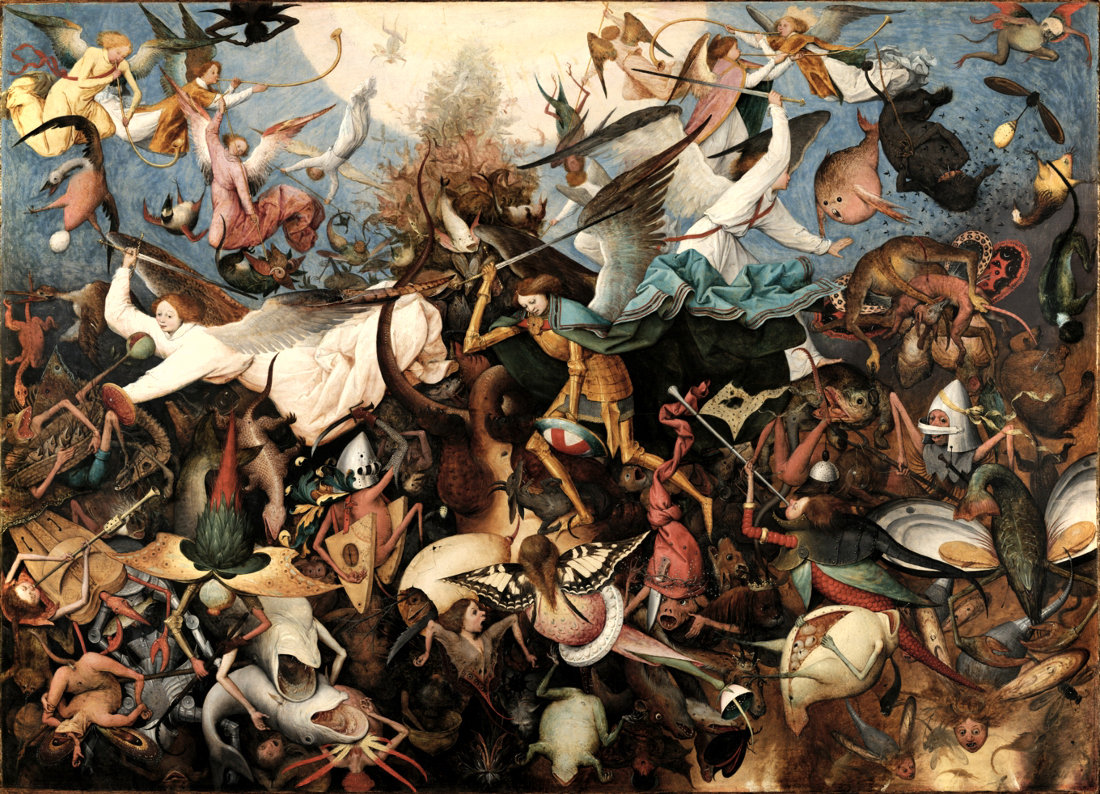
Speaking of creepy little demons, how about a giant swarm of them? Pieter Bruegel the Elder, who was hailed as a Second Bosch, took his fore-runner’s demons to a whole new level with this expulsion of the rebel Angels from Heaven. While the Archangel Michael and the rest of the good Angel gang retain their beautiful, human-like shapes, the rebel-angels-turned-demons take on perverted forms of nature, like hurdy-gurdies with lobster claws and giant frog creatures bursting at the seam with eggs, earning themselves a big fat nope from every viewer ever. The hilarity of demons farting does little to mitigate the horror of the sheer size of the demon horde still funneling down from the sky. Let’s just say Uncle officially has the willies.
3. Saturn Devouring his Son by Peter Paul Rubens at Prado National Museum
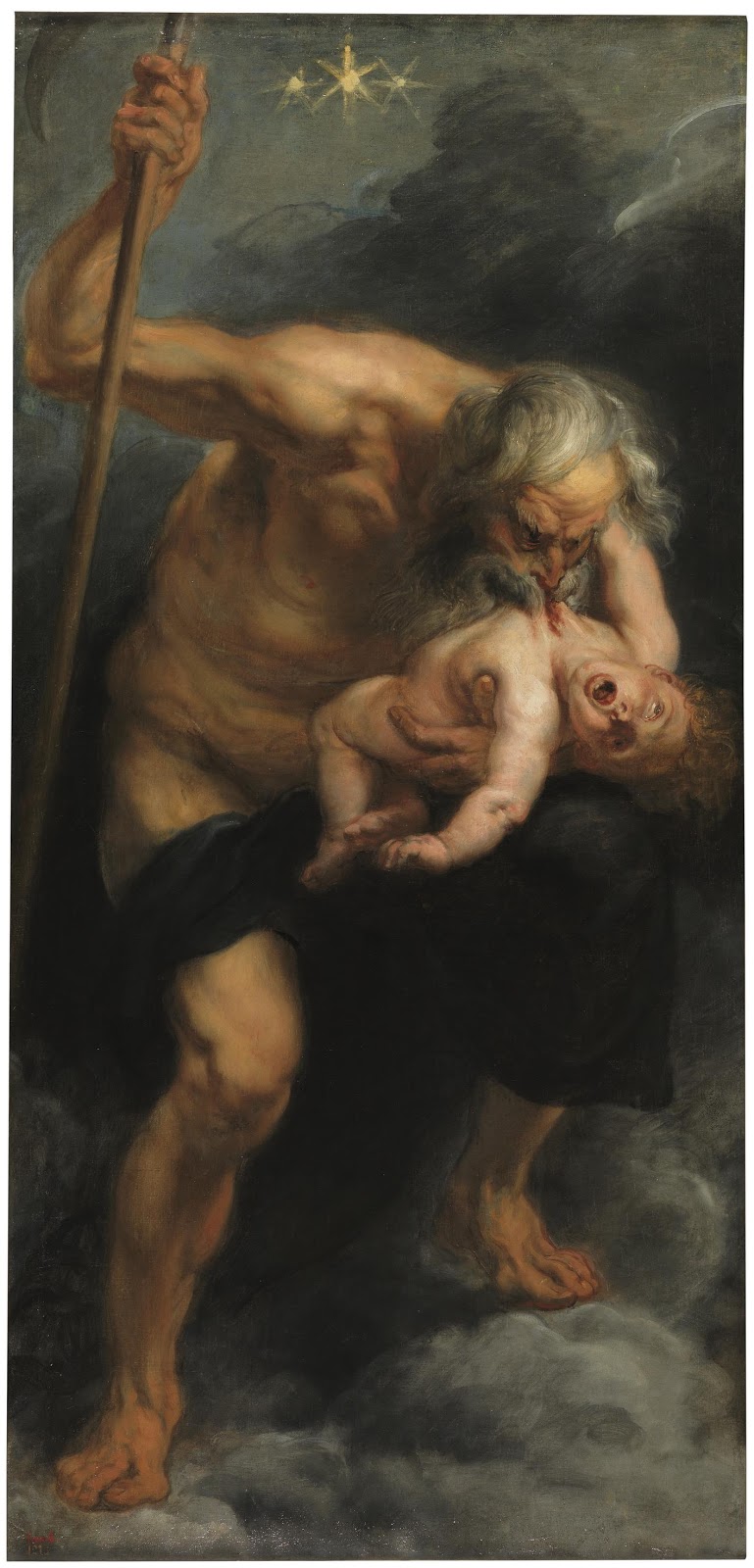
You may have seen Goya’s terrifying version of the same subject, but nothing beats the immediacy of this very human-looking being devouring his own very human-looking son. Basically, after hearing of a prophecy that his offspring would overthrow him, Saturn up and ate all of his children--except for his last one, Zeus, whom his wife hid away from him. Actually, she tricked Saturn by handing him a rock wrapped in swaddling cloths instead, which Saturn immediately ate. (A trick and a treat!) It would seem Saturn wasn’t the brightest. Alas, this is one of the unluckier older children. Rubens was a master at conveying narrative and high emotion, in this case the perversion of power, through simple, powerful gestures. While we have Ovid to thank for the gory subject matter, it is Philip IV of Spain we must thank for commissioning Rubens to conjure up this disturbing vision of cannibalism, which was used as a decoration for the Torre de la Parada, Philip’s new hunting lodge. How lovely!
4. The Magic Circle by John William Waterhouse at Tate Britain
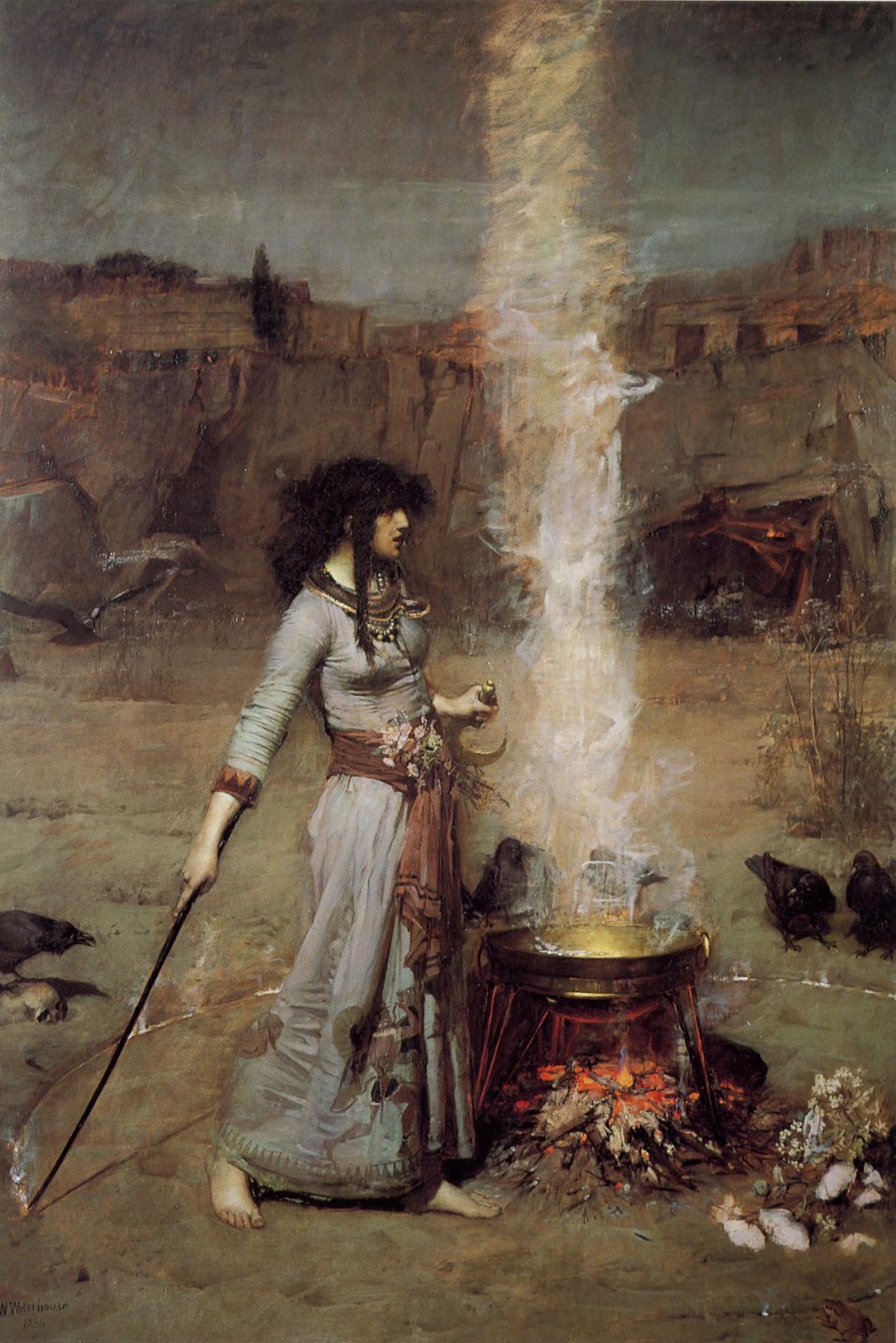
Witch, please! Like all the Pre-Raphaelites, Waterhouse was enchanted by the idea of witches and the ever-so-trendy Occult. This painting is rife with standard witch imagery. Around her neck, the lady wears an an ouroboros, an old mythical symbol that dates back to ancient Egypt and represents the infinite cycle of life, death, and rebirth. She has a wand to cast her protective circle and a Wiccan sickle called a boline to cut herbs. The boline’s crescent shape associates the witch with Hecate, Greek goddess of the moon and witchcraft. The tiny frog and black birds may even be her familiars. #Justwitchythings. Waterhouse works his magic here, too, creating a dynamic, exciting painting despite using such a muted color palette.
5. Three Studies for a Crucifixion by Francis Bacon at the Solomon R. Guggeheim Museum
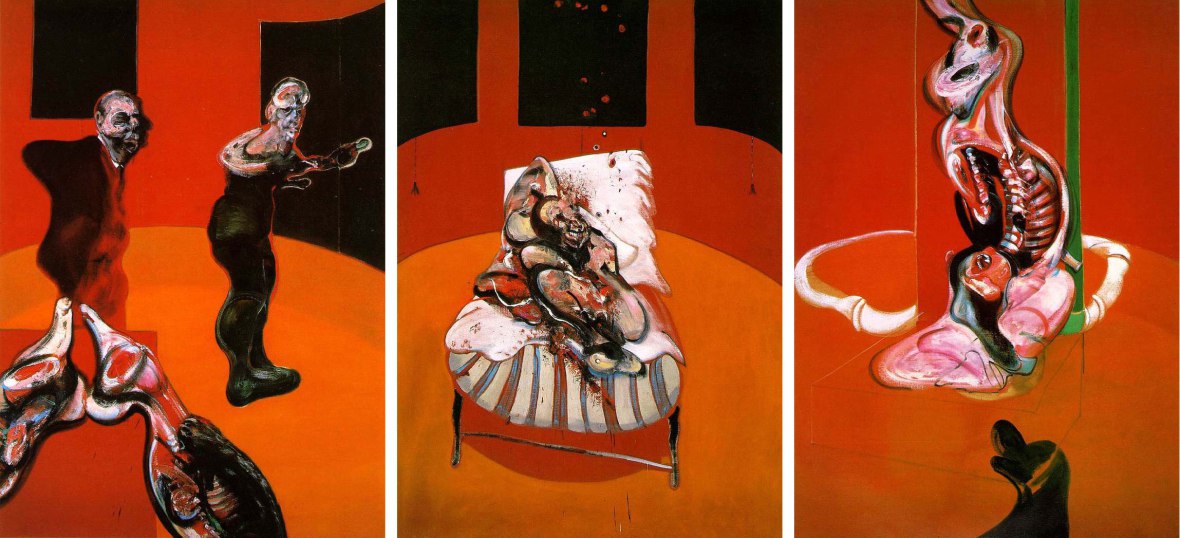
Irish painter Francis Bacon was an artist who also could have had a lucrative career in nightmare manufacturing. While he borrows the medieval, religious format of a triptych for this crucifixion picture, Bacon was less interested in Christianity and more interested in conveying emotions through twisted shapes that vaguely resemble human forms in states of anguish. Here, torture and suffering wrack the human frame beyond recognition until it is finally just a butchered hunk of meat. Nightmare fuel aside, Bacon was often inspired by butcher shops, which is totally perfect for someone with a last name like Bacon.
If you want to see more creepy art, just check out our Heebie-Jeebies category on Sartle.com. In the meantime, stay safe, have a Happy Halloween, and maybe, if you have to, sleep with the lights on.

Sources
- Battistini, Matilde. Astrology, Magic, and Alchemy in Art. Translated by Rosanna M. Giammanco Frongia. Los Angeles: Getty Publications, 2007.
- De Pascale, Enrico. Death and Resurrection in Art. Translated by Anthony Shugaar. Los Angeles: Getty Publications, 2009.
- Luna, Juan J. From Titian to Goya. Great Masters of the Museo del Prado. Shanghai: National Art Museum of China-Shanghai Museum, 2007.









